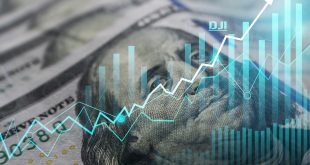Following a significant spike in T-bond yields, the market has momentarily stabilized, but Americans continue to borrow heavily despite Fed Chair Jerome Powell’s 18-month efforts to alter their borrowing and spending habit.
Middle East tensions could boost gold, US dollar
Tensions in Palestine are causing investors to seek safe-haven assets and monitor Middle East developments. The tensions between Hamas and Israel increase geopolitical risk, potentially increasing demand for US treasuries. Gold and the US dollar are ideal hedges against international turmoil, benefiting the dollar. Higher US interest rates are causing bond yields to rise.
Market Reaction to NFP Data
The US dollar fell against other currencies due to a September jobs report showing a significant increase in hiring but slowing wage growth. The dollar index fell by 0.31 % to 106.03. The index briefly rose to 106.98 earlier, after data showed US nonfarm payrolls increased by 336,000 jobs.
The data pushed expectations for the first rate cuts further into late 2024, but failed to convince market participants of another hike this year, meaning short-term yields remained relatively stable. Post-payrolls, US rate futures priced in a 42% chance of a rate increase by the end of the year, up from about 33% on Thursday.
The dollar’s recent strength has been underpinned by a rapid sell-off in US government bonds, which sent yields to multi-year highs. The payrolls data showed monthly wage growth remained moderate, with average hourly earnings rising 0.2% after a similar gain in August. In the 12 months through September, wages increased 4.2% after advancing 4.3% in August.
Asian stocks
Asian equities are at risk of the longest run of annual losses since the dot.com era due to higher oil prices and a hawkish US Federal Reserve. The MSCI Asia Pacific Index is headed for a technical correction, with the gauge down over 10% from its peak in July. This could cause markets to sputter in the final quarter of 2023, as strategists predict a mix of risks will impact the performance of Asian stocks.
Will Euro Benefit from Lagarde’s Statements?
Christine Lagarde, the European Central Bank President, expressed confidence in the ECB’s ability to reduce inflation to 2% and its gas reserves situation. She stated that key ECB interest rates have reached levels that will contribute to inflation’s return if maintained for a long time. Lagarde also highlighted the significant fall in inflation, economic reforms in Europe, and the better-than-before state of Europe’s gas reserves. She stated that structural reforms are being implemented and that Europe has successfully replenished over 90% of its gas reserves by September 2023.
It is worth noting that after hitting a weekly low near 1.0448, the Euro has now just about recovered for the trading week. Last month, the US added 336K jobs, easily surpassing the forecast of 170K and going above the prior reading of 176K (updated to 227K).
Oil and Gold
Following Friday’s recovery, the price of gold is now back around $1,850, supported by rising geopolitical concerns in the Middle East that also trigger worries about a further rise in oil prices, which could endanger global inflation and the prospects for the economy.
Demand for safe haven assets has surged, which helps the US Dollar. A holiday in Japan is causing gold prices to move more quickly than usual, and investors are anticipating developments in the Middle East, changes in oil prices, and incoming US inflation data as new trade catalysts. Currently up 0.94% to $1,850, the price of gold touched a new five-day high of $1,856 in the early exchanges.
The WTI Crude Oil price has risen over 4% to its highest level in three days, briefly recapturing the $85 mark in the first Asian session in this new trading week. This rebound comes after the Middle East conflict, which could impact global oil supplies. The conflict is causing fears of expansion beyond its current boundaries. Countries like Bahrain, Iraq, Kuwait, Oman, Saudi Arabia, and the UAE are reaffirming their commitment to voluntary adjustments to oil production.
Central Banks
The Reserve Bank of New Zealand has extended its moratorium on monetary tightening for the third time in a row, keeping the official cash rate at 5.5%. The central bank aims to constrain spending and reduce cost pressures after a 525-basis point interest rate hike since October 2021. The Reserve Bank of Australia has also kept the cash rate unchanged at 4.1% during its first meeting under new governor Michael Bullock.
Other Key Developments
European markets have started after the US legislature agreed a stopgap measure to end the partial government shutdown. The Caixin PMI surveys have highlighted the region’s concerns, with services PMI’s first contraction of 2023. Precious metals markets have continued to decline, with gold and silver continuing their recent price declines.
House Speaker Kevin McCarthy was removed as a result of a congress disagreement that was ignited by Congressman Gaetz’s dissatisfaction with Congress’s lack of economic responsibility. The future is uncertain in light of this unusual overturn, which could lead to budget conflicts, government shutdowns, and temporary solutions. Washington might eventually run out of room to kick the can down the road, though. Foreign central banks and people will pursue de-dollarization as the depreciation of the dollar forces them into alternative assets that can maintain their purchasing power over time.
Rising long-term interest rates are affecting bonds, stocks, real estate, and metals markets. Gold’s performance could have been worse this year due to the surge in bond yields and a rising dollar exchange rate versus foreign currencies.
The dysfunction in Washington, D.C. raises the risk of national bankruptcy and the fall of the US dollar as a world reserve currency. The rest of the economy appears to be turning around, suggesting the PBoC may take additional supportive action.
What to watch in the new trading week
Attention now shifts to next week’s US inflation data that could offer clues to Fed action going forward. If next week’s US consumer price data pushes yields even higher, safe-haven flows beginning to add to rate differentials in supporting the greenback.
 Noor Trends News, Technical Analysis, Educational Tools and Recommendations
Noor Trends News, Technical Analysis, Educational Tools and Recommendations





